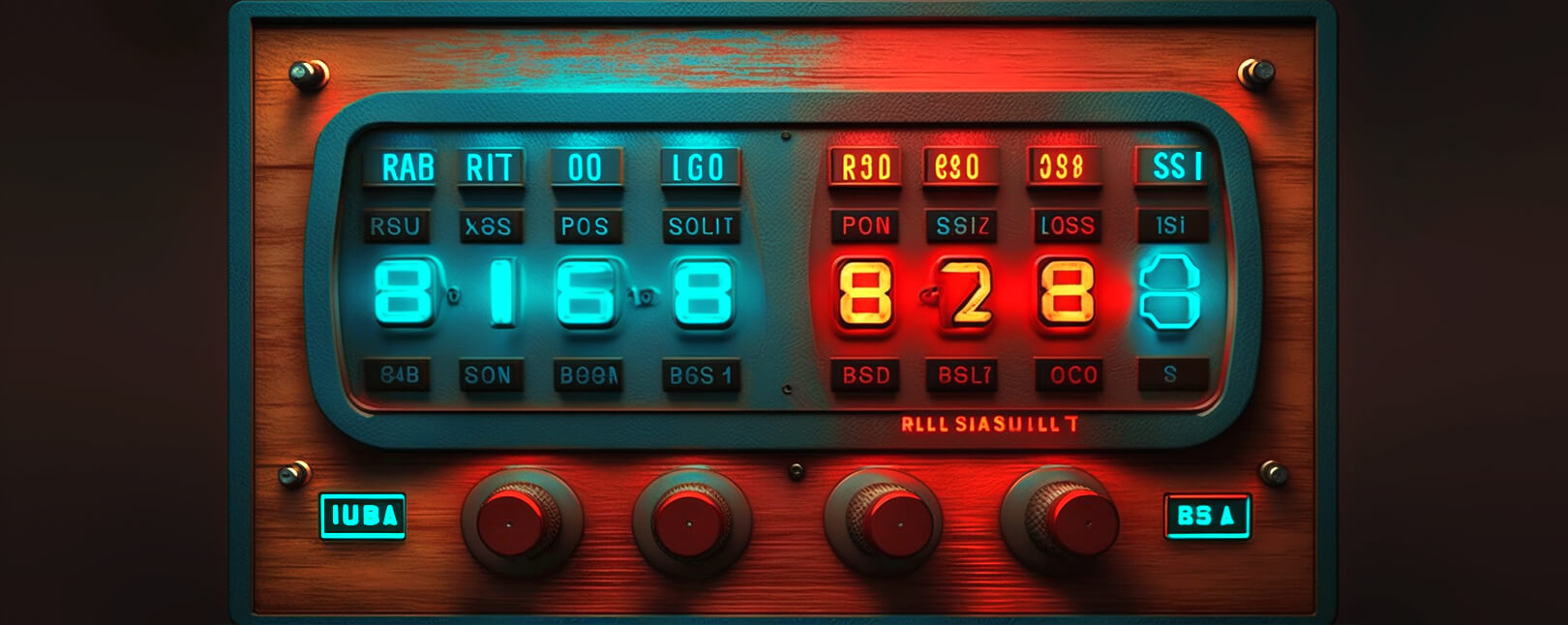What are ACH Return Codes? How Do You Avoid Losing Money Due to ACH Returns?
A lot of consumers (and even some merchants) have never heard of an automated clearinghouse, or ACH. Regardless, they probably still use one every single day.
Direct deposit of a paycheck? That goes through ACH. Paying bills online using your bank account? That goes through ACH. Merchants can even use ACH as a way of paying vendors.
It’s a great service.. but there’s still the potential for something to go wrong.
For instance, what if a customer’s payment gets returned? How does the merchant know, and how do they figure out why it happened?
Recommended reading
- Best Credit Card Processing Companies of 2025 REVEALED
- Why is My Bank Account is Under Investigation?
- Issuer Declines: 7 Reasons They Happen & How to Fix Them
- What a Combined Capital One & Discover Means For Merchants
- What is an Issuing Bank? The Issuer's Role in Payments
- What is an Acquiring Bank? The Acquirer's Role in Payments
What is an ACH Return?
ACH transfers are a digital method of moving money between banks, credit unions, and other financial institutions, primarily within the US and its territories. The National Automated Clearinghouse Association (NACHA) oversees the ACH network, and reports that some 30 billion payments were processed through the network in 2022. However, not all of these transactions will ultimately be completed.
If a transaction fails to process, one of the banks involved in the process may receive an ACH return. This is a way of informing the institution that the amount in question either could not be collected from, or deposited into, the appropriate account.
To understand ACH returns and ACH return codes, you need to know these two important acronyms: ODFI and RDFI.
“ODFI” stands for “Originating Depository Financial Institution,” while “RDFI” means “Receiving Depository Financial Institution.” The ODFI is the party who initiates the process on behalf of the payer (“The Originator”). The RDFI is the financial institution who receives the credit or debit on behalf of the payee (“the Receiver”).
An ACH return is a message, typically sent by an RDFI, that informs an ODFI that the ACH Network either couldn’t collect funds, or couldn’t deposit funds, into the receiver’s account.
You can think of a return as the electronic version of a bounced check. But, while bounced checks are generally caused by insufficient funds, that’s only one of multiple reasons why an ACH return may happen.
Valid Reasons for an ACH Return
A consumer will usually need to submit a Written Statement of Unauthorized Debit (WSUD) to initiate an ACH return. This is a form which bank customers fill out if they find incorrect or invalid debits on their accounts.
The WSUD is supplied by the financial institution where the charge took place. Submitting one initiates the process of reversing an ACH debit that the user claims was unauthorized.
Legitimate reasons to consider an ACH dispute include:
- The payment failed due to incorrect information details
- The transaction was misrouted and therefore incorrectly processed
- The payment failed due to a duplicate entry
- A credit was unintentionally sent to the receiver during the return process
- The payment was not returned within the NACHA-mandated timeframe
The party responsible for a failed ACH transaction will get hit with an ACH return fee, which typically ranges from $2-5 per occurrence.
A “lack of authorization” return, for example, will often result in a fee for the RDFI. Returns that stem from insufficient funds, however, will likely mean a fee charged to the customer’s account. Going back to our earlier analogy, think of it like a bounced check fee, but for electronic bank transfers.
What is an ACH Return Code?
- ACH Return Codes
An ACH return code is a 3-digit alphanumeric indicator attached to a returned ACH transaction. The code is meant to explain why an ACH transfer could not be processed.
[noun]/ā • cē • eɪCH • rə • tərn • kōd/Each return includes a three-character ACH return reason code that can point the recipient to additional details, and help explain why the return happened.
There are over 80 unique return codes, and each one represents a different type of return. ACH return codes are a type of shorthand for specific information concerning the return, much like the card decline codes or dispute reason codes used by credit card networks.
All ACH return reason codes consist of the letter “R” followed by two numbers (R01, R12, R22, etc.). There are also specific return time frames, which can differ between codes.
ACH Return Codes: The Complete List
With ACH transactions, there are dozens of possible return request scenarios. However, most returns happen for a few common reasons. With that in mind, let’s look at a few of the most frequently used ACH return reason codes, along with the time frames in which an ACH return may be requested using these codes:
| Return Code | Reason for Return | Description | Response Time Frame |
| R01 | Insufficient Funds | Insufficient balance to process transaction | 2 banking days |
| R02 | Account Closed | Previously active account has been closed | 2 banking days |
| R03 | Unable to Locate Account | Account number structure is valid, but doesn’t match the entry or is not an open account | 2 banking days |
| R04 | Invalid Account Number | Incorrect account number structure | 2 banking days |
| R05 | Unauthorized Debit to Consumer Account via Corporate SEC Code | An unauthorized debit entry was transmitted to a consumer account | 60 calendar days |
| R06 | ODFI Requested Return | The Originator’s bank asked for the return | 60 calendar days |
| R07 | Authorization Revoked by Customer | Consumer revoked a previously authorized entry | 60 calendar days |
| R08 | Payment Stopped | The Receiver requested the stop payment of an ACH debit entry | 2 banking days |
| R19 | Uncollected Funds | Sufficient balance exists, but requested amount brings available balance below amount of debit entry | 2 banking days |
| R10 | Customer Claims Originator Is Not Known to/Is Authorized to Debit Receiver’s Account | Receiver has no relationship with the Originator or has not authorized the Originator to debit the account | 60 calendar days |
| R11 | Customer Advises Entry Not in Accordance with the Terms of the Authorization | Debit was inaccurate or improperly initiated; source document was ineligible; notice was not provided to the Receiver; or amount was inaccurately obtained | 60 calendar days |
| R16 | Account Frozen | Funds unavailable due to action by the RDFI or legal action | 2 banking days |
| R20 | Non-Transaction Account | The RDFI’s policies restrict activity to account | 2 banking days |
Again, those are just the return reason codes you’re most likely to see attached to an ACH return request. There are plenty of others, from non-compliance with state or local regulations to situations where one or the other party is deceased.
You can click below to check out a complete list of ACH return codes:
ACH transactions can be defined as being either “pushed,” meaning the payer initiates the transfer of funds from their bank account, or “pulled,” meaning the payee has the authorization to collect funds directly from the payer's account.
ACH Returns vs. Chargebacks: What’s the Difference?
Some people confuse ACH returns with chargebacks, to the point that they’re sometimes described as “ACH chargebacks.” However, ACH returns and chargebacks are two very different things.
Cardholders and financial institutions are hyper-aware of the threat posed by card fraud. As a result, cardholders can dispute credit card charges and often get chargebacks filed on their word alone. Money can then be removed from the merchant’s account without warning, even months after the transaction.
There is a formal process by which merchants can fight the chargeback, and the card network may even be called in to make a final judgment. However, the odds of success are relatively low.
ACH transactions, on the other hand, are cleared between banks automatically, even before the customer’s bank verifies the account balance. If there turns out to be an issue, however, the amount has to be refunded within two days. Sometimes the ACH operative will even hold the money for 3-5 days, making sure everything is clear before releasing the funds to the receiver.
With ACH transactions, there’s really nothing here to “charge back.” This is a simple return, usually with no direct involvement from the customer or the merchant.
Dishonoring ACH Returns
What if an ACH return was not properly authorized, though? Maybe an ACH return is submitted, but the reason given is not valid? In this case, the party that received the ACH return notification can request that the ACH return be reversed, or “dishonored.”
Dishonoring an ACH return can be done under the following circumstances:
In any of the above cases, an ACH return issuance would result in an unintended credit being granted to one person’s account. So, there would be grounds for that ACH return to be canceled.
Keep in mind, however, that there is a very tight deadline for requesting that a return be dishonored. A dishonored return must be transmitted within five banking days of the return settlement date.
Tips for Avoiding ACH Return Codes
ACH returns are bad news for everyone.
For merchants, the damage comes in the form of lost revenue from bank transfers that are ultimately reversed. For ODFIs, too many ACH returns could actually lead to the loss of network privileges. This can happen if the ODFI breaches any of the following thresholds within a 60-day period:
| Return Type | Threshold, as % of Total ACH Transactions | Calculated Based on Return Codes |
| Administrative | 3% | R02, R03, and R04 |
| Unauthorized | 0.5% | R05, R07, R10, R29, and R51 |
| Overall | 15% | All return codes |
Many customer issues, such as insufficient funds, are beyond merchants’ and banks’ control. Nevertheless, adhering to best practices can help:
- Ensure routing numbers, account numbers, and transit numbers are entered correctly.
- Maintain strict compliance with all NACHA requirements.
- Keep an eye out for excessive returns tied to individual users.
- Validate that the account is active and is set up for ACH transfers.
- Check that the account is set up to receive the type of transaction in question.
- Define a set time frame for users to cancel a transaction, in case of unintended authorization.
Final Thoughts
ACH transfers can be a low-hassle way to send or receive money. For merchants, it is a viable alternative payment option that could make customers happy.
Even with precautions in place, however, sometimes ACH payments will fail to go through.
As a merchant, you need to have a plan in place to accept payments when ACH transfers are not available. You also need to have a way of recovering funds lost if an ACH transfer goes wrong.
Talk to one of our experts today about developing a broader, more comprehensive solution for payments and risk mitigation.
FAQs
What is an ACH return?
You can think of an ACH return as the electronic version of a bounced check. An ACH return is a message, typically sent by an RDFI, that informs an ODFI that the ACH Network either couldn’t collect funds, or couldn’t deposit funds, into the receiver’s account.
What happens when ACH is returned?
If a transaction fails to process, one of the banks involved in the process may receive an ACH return. This is a way of informing the institution that the amount in question either could not be collected from, or deposited into, the appropriate account. The transfer can then be reattempted, or another payment method may be used.
Why does an ACH payment get returned?
There is a wide range of situations that could lead to a returned ACH payment. Some of the most common are insufficient funds, revoked authorization, or an invalid account number.
What are ACH return charges?
Having an ACH transfer returned typically involves a fee. On average, ACH return fees range from $2-$5 per occurrence.
Can an ACH payment be charged back?
No, ACH return chargebacks can’t really happen. Certain return cases can be disputed, if they were not properly authorized; a process called an ACH return. However, this is distinct from the chargeback process, which is limited only to credit and debit cards.















